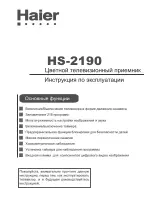
5
Regarding Battery Care (Continued)
Prohibited use for which safety is not guaranteed.
• Do not try to disassemble or modify the battery. The battery
contains safety mechanisms and protection devices.
Damaging these safety devices may cause the battery to
generate heat or smoke, or to rupture or ignite.
• Do not connect the + and – terminals together with metal
such as wires. Do not carry or store the battery together
with metal objects such as necklaces and hairpins. Doing
so may cause the battery to be short-circuited so as to
cause an extremely large amount of electric current to flow,
which may cause the battery to generate heat or smoke,
rupture or ignite, or may cause metal objects such as wire,
necklaces, or hairpins to heat up.
• Do not expose batteries to fire or heat. Doing so may cause
insulating materials to melt, damage gas exhaust valves or
safety mechanisms, or ignite electrolytic solutions, which
may cause the battery to generate heat or smoke, rupture
or ignite.
• Do not leave the battery in or near fire, stoves, or other
high-temperature locations (of temperatures greater than
60°C (140°F)). If a resin separator is damaged by heat, the
battery may become internally short-circuited and this may
cause the battery to generate heat or smoke, rupture or
ignite.
• Do not expose the battery to water or salt water, or allow
the battery to get wet. If the protection device contained in
the battery is broken, this may cause the battery to gener-
ate heat or smoke, rupture or ignite.
• Do not charge the battery near a fire or in direct sunlight. If
the battery becomes hot, the protection device for prevent-
ing danger operates to disable the battery from being
charged. If the protection device contained in the battery
becomes broken, the battery is charged at an abnormal
electric current or voltage. An abnormal chemical reaction
occurs inside the battery which may cause the battery to
generate heat or smoke, rupture or ignite.
• Charge the battery in compliance with the specified charg-
ing conditions. If the battery is charged without compliance
to the charging conditions (at temperatures greater than the
specified temperature, at voltages and electric current
greater than the specified amount or with modified charg-
ers), the battery may be overcharged or charged at an
abnormal electric current and an abnormal chemical
reaction may occur inside the battery, which may cause the
battery to generate heat or smoke, rupture or ignite.
• Do not pierce the battery with nails, strike the battery with a
hammer, or step on the battery. Doing so may cause the
battery to generate heat or smoke, rupture or ignite.
• Do not subject the battery to strong impacts or throw it
away. If the protection device contained in the battery
becomes broken, the battery is charged at an abnormal
electric current or voltage. An abnormal chemical reaction
may then occur inside the battery, which may cause the
battery to generate heat or smoke, rupture or ignite.
• Do not use the battery if it has been considerably damaged
or deformed. This may cause the battery to generate heat
or smoke, rupture or ignite.
• Do not solder directly onto the battery. Doing so may cause
insulating materials to melt, or damage gas exhaust valves
or the safety mechanism, which may cause the battery to
generate heat or smoke, rupture or ignite.
• Use a battery case when carrying the battery.
• Keep the battery out of reach of children.
• In the event that the fluid inside the battery gets into one’s
eye, do not rub the eye because this may cause loss of
eyesight. Rinse the eye with clean water and consult a
doctor immediately. In the event that the fluid becomes
attached to skin or clothes, wash it off with clean water
immediately as this may cause injury.








































